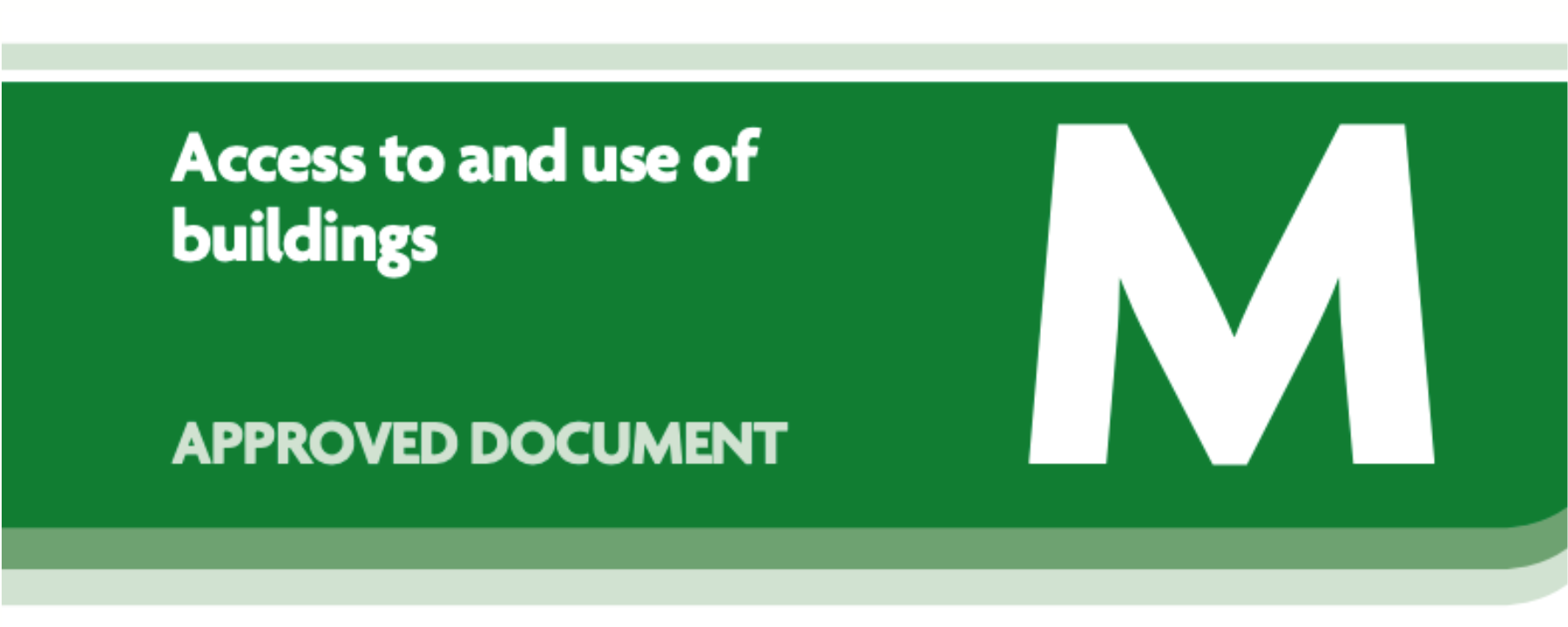
Meeting M4(2) for Small Apartment Blocks
“Approved Document M – Access to and Use of Buildings” came into effect on 1st October 2015, which relates to the access and use of buildings. Part M is split into two volumes, the first of which relates to the access and use of dwellings.
This volume provides accessibility requirements for three different types of houses:
Part M4(1) – Visitable Dwellings
Part M4(2) – Accessible and Adaptable Dwellings
Part M4(3) – Wheelchair User Dwellings
Accessibility for all different persons is an important requirement for any development, with M4(2) being first introduced through its forerunner – the Lifetime Homes standards. This standard was readily adopted by Local Planning Authorities (LPA’s) within their policy requirements to achieve a percentage of new build dwellings meeting the standard.
Gradually, and thankfully, we are seeing more and more LPA’s now looking to implement policies and conditions on new development, that require a higher percentage of dwellings achieving the M4(2) standard – making a significant proportion of new dwellings accessible and adaptable for new residents.
We have recently come across an instance where the LPA has conditioned 100% of new dwellings to meet the Optional M4(2) standard, with a small proportion of M4(3) dwellings required. This is also a policy requirement within the local plan, and appropriately aims to ensure dwellings are sustainably constructed for residents now and into the future.
On the whole, we see this as a positive move from LPA’s – with only minor, uncostly, adaptations to both the internal building design and site parameters, to ensure ease of access for everyone. Flexibility within the Guidance documents allows these requirements to be met readily.
The issue with this however, is that in many instances, Local Housing Needs surveys and Housing Mix consultees often identify the requirement for a small percentage of affordable tenure apartments – one or two bed dwellings for single / couple occupiers – who may not have accessibility needs at the present time.
On many development sites, this doesn’t present an issue. The premise of M4(2) is to provide easy, step-free access to the ‘Principal Private Entrance’, and in particular on larger or denser sites, this can readily and viably be accommodated by the provision of apartment accommodation utilising lift access.
However in a number of instances this is more difficult to achieve on viability grounds. Smaller sites with a local housing need of 3 or 4 apartments, or semi-urban / rural sites where further densification through apartment schemes goes against the grain of development are a prime example. Including a lift on these sites – and its associated infrastructure – for a rise of a single storey doesn’t justify the reduced market rate achieved by developers for Affordable Housing.
In addition, whilst we welcome the addition of bungalows to meet accessibility requirements as a policy requirement, there are viability arguments to avoid their inclusion above local housing needs – in particular if bungalow dwellings replace apartments on the smaller sites – given the additional land-take and disproportionate cost associated with their construction. Notwithstanding the argument around balancing social sustainability and environmental sustainability through the densification of housing sites.
Councils should be aware of their own housing needs and therefore prescribe a suitable mix of affordable and accessible housing for new developments in the first place.
However, there is a little known paragraph under Government Guidance from the Department for Levelling Up, Housing and Communities which states as follows:
“The Building Regulations for accessible and adaptable or wheelchair user dwellings require that these types of dwelling should achieve step-free access. In setting policies requiring M4(2) and M4(3) compliant dwellings, local planning authorities will need to assess whether this has an impact on non-lift serviced multi-storey development in their local housing mix. Where step-free access in this type of development is not viable, neither of the Optional Requirements in Part M should be applied.”
Housing: optional technical standards – GOV.UK (www.gov.uk)
This therefore puts the onus on LPA’s to both understand and implement their own interpretation of the M4(2)and M4(3) standards.
On this particular project, the Building Control Officer (BCO) has refused to sign off a small apartment building which doesn’t meet the ‘Step Free Access’ to upstairs flats with no lift.
All other principles of M4(2) have been applied, whilst the staircase also meets the principles of a General Access Stair under Part K in the Building Regulations – providing an accessible route to residence for less-abled persons, in addition to suitable provision for the installation of a stair lift for the ambulant disabled.
So where does this leave us with Building Control sign off? As with all of our blog posts this should not be relied upon other than for guidance…However this is our interpretation.
It is worth noting at this point that the premise of Lifetime Homes and Part M4(2) are to provide for ‘accessible and adaptable’ dwellings. The ‘Approved Documents’ – though prescriptive – are guidance documents only. Parts M4(2) and M4(3) are also optional requirements. On this basis, we consider there is room for interpretation and a common sense approach to accessibility so long as the general principles of the Building Regulations are met.
Firstly, the Local Planning Authority has to be absolute with their housing needs. Are they happy to accept a small apartment block without lift access? The common sense approach would be to show the interpretation of Part M4(2) for these units across the planning application set, making specific reference to all remaining aspects of Part M4(2) which the apartments do meet. In addition to identifying the Part K compliant General Needs staircase.
Bonus points here for obtaining in writing from the LPA that they accept this provision in line with the Government Guidance above. This is also of particular importance where the Section 106 agreement (S106) specifically identifies a legal requirement for Part M4(2).
This way, when it comes to BCO sign off, there is a clear evidence trail to show that the LPA have already considered the design of the apartment being Part M4(2) compliant without lift access.
If the BCO is unwilling to make concessions, the provisions above give a clear evidence trail to amend any conditions applied to the approval through a Section 73 Variation of Condition. Again, citing the government guidance above, and making reference to the approved planning set with M4(2) mark-ups, there is a clear justification for the LPA to reduce any percentages applied by condition by the relevant amount. Therefore providing all the evidence and planning approval you need to present to your BCO to relax their interpretation.
Written by Guy Siragher (Associate Director, RDC)
Connect with Guy here on LinkedIn.
